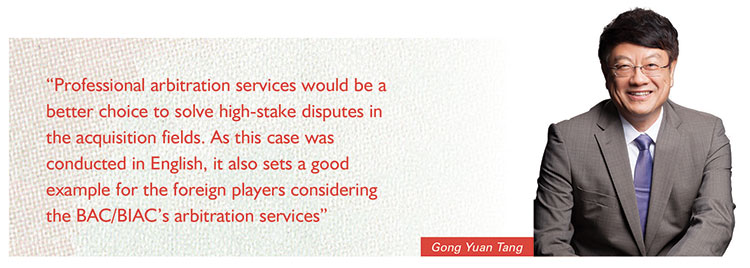Click here for Chinese version 按此阅读中文版
 In the current economic climate, the ratio of non-performing loans (NPL) in commercial banks continues to grow in China. In February 2016, eight ministries and commissions including the People’s Bank of China released ‘Several Opinions on Financial Support to Maintain Steady Industrial Growth, Adjust Industrial Structure and Improve Industrial Efficiency’, calling for improved efficiency of the process for disposing of NPL and new market opportunities to NPL disposal. Furthermore, for foreign investors actively involved in disposal of Chinese NPL since 2001, it is undoubtedly another round of hot investment opportunities to share with the Chinese NPL market.Foreign investors were first permitted to participate in disposal of Chinese NPL as early as October 2001 with the announcement of the ‘Tentative Regulations on the Attraction of Foreign Capital by Financial Asset Management Corporations to the Restructuring and Disposal of Assets’ by the Ministry of Finance, the People’s Bank of China and the former Ministry of Foreign Trade and Economic Cooperation. In November 2001, a bidding group consisting of Salomon Smith Barney, KTH Fund and Zhong Jin Feng De under Morgan Stanley, Lehman Brothers and Citigroup purchased four NPL portfolios from China Huarong Asset Management Corporation (Huarong) with a total book value of RMB10.8 billion, which started a new chapter in foreign investor engagement in the disposal of Chinese NPL. Subsequently, following the introduction of relevant national policies, foreign investors fully participated in the disposal of Chinese NPL in various ways up until the NPL previously allocated to the Financial Asset Management Corporations (AMCs) as per the state economic policy were all disposed of, and then the investors gradually faded out around 2005. At present, the banks’ NPL has maintained a rapid growth since 2015, and the huge market has attracted the attention and interest of more and more international investment banks. By virtue of the emergence of a new round of hot opportunities for investing in NPL, we summarise the major methods foreign investors have previously used to participate in the disposal of Chinese NPL, and put forward some innovative methods for foreign investors to invest in NPL disposal in the current economic environment. We offer these insights to international investment banks that are preparing for or are already actively participating in the disposal of NPL, as well as domestic institutions intending to partner with foreign investors in the disposal of NPL. 1. Outbound investment by AMCs with NPL portfolio At the beginning of the first round of introducing foreign investment in the restructuring and disposal of NPL in 2001, AMCs were still exploring specific operating methods to utilise foreign investment, given that the only guiding principles were provided in the ‘Tentative Regulations on the Attraction of Foreign Capital by Financial Asset Management Corporations to the Restructuring and Disposal of Assets’, and no supporting regulations were released by relevant authorities including the State Development and Reform Commission, foreign trade and economic cooperation departments and foreign exchange administration departments. The ‘Yanjiang Portfolio’ project, where we provided legal services to China Orient Asset Management Corporation (Orient) in 2001, was the pilot project officially approved by relevant authorities under the State Council to dispose of an NPL portfolio in the model of outbound investment. The fundamental transaction structure of the project was as follows: a fund management LLC was established in the US, in which the Guangzhou office of Orient invested with the appraising value of a NPL portfolio with the book value equivalent to RMB1.8 billion to subscribe corresponding equity interests in the fund management LLC and the US investor invested with cash; Orient transferred its equity interests to overseas investors and received the transfer price; the aforementioned fund management LLC entrusted Lowe Bingham & Matthews – Pricewaterhouse Coopers to take charge of debt collection as its servicer; given that debt collection was not Lowe Bingham & Matthews – Pricewaterhouse Coopers’ expertise, they cooperated with the Guangzhou office of Orient so that the Guangzhou office of Orient was responsible for debt collection in exchange for service fees. The ‘Yanjiang Portfolio’ project was the first NPL disposal project that utilised foreign investment in China. It facilitated the establishment and optimisation of China’s foreign exchange administration system in the area of NPL, including registration methods for turning domestic debts into foreign debts, settlement procedures of income in foreign exchange, filing registration procedures of foreign securities, etc. These procedures gradually took shape during the actual process of the project, and were reflected in the ‘Notice on Foreign Exchange Administration with regard to Financial Asset Management Corporations Utilizing Foreign Investment in Disposal of Non-performing Asset’ (Hui Fa [2014] No. 119, which was annulled) issued by the State Administration of Foreign Exchange on December 17, 2004. The above transaction also created a transaction model where an NPL portfolio is used as capital contribution for outbound investment in order for the foreign capital to be utilised in NPL disposal. The basic transaction models are summarised as follows: on one hand, an AMC may invest in an overseas LLC at the appraised value of the NPL portfolio, through which it subscribes equity interests in overseas LLC and thereafter sell such equity interests in exchange for the transfer price. On the other hand, the AMC may act as a service provider for the NPL portfolio, providing debt collection services and obtaining relevant service fees. 2. Transfer of NPL portfolios from AMCs to foreign investors When selling NPL portfolios to foreign investors, AMCs are required to obtain approval and implement disposal of NPL in accordance with the regulations on AMCs, including the ‘Administration Measures on Asset Disposal by Financial Asset Management Corporations (Revised)’ (Cai Jin [2008] No. 85) and other relevant regulations. AMCs also need to follow relevant Chinese laws and regulations on foreign debts. Unlike selling NPL portfolios to domestic investors, AMCs selling NPL portfolios to foreign investors will lead to a change in creditors (i.e. from domestic creditors to foreign creditors) to whom the debts are owed by domestic institutions, and therefore become regulated by the foreign exchange administration departments as well as the development and reform departments. In our many years of experience in providing legal services to AMCs and foreign investors respectively in such areas, we have observed a trend of gradual relaxation in legislation and government regulatory measures. Specifically: State Administration of Foreign Exchange However the ‘Notice of Relevant Issues on Foreign Exchange Administration of Disposal of Non-performing Asset by Financial Asset Management Corporations’ (Hui Fa [2015] No. 3) stipulates that the transaction price obtained by AMCs from the disposal of NPL may be directly deposited and settled in banks; as for income obtained by foreign investors from the disposal of NPL, foreign investors may directly purchase and remit foreign exchange in banks without going through procedures for verification, approval or registering with State Administration of Foreign Exchange. National Development and Reform Commission However, the above Circular was annulled on January 1, 2016, and replaced with the ‘Circular of the National Development and Reform Commission on Promoting the Administrative Reform of the Record-filing and Registration System for the Issuance of Foreign Debts by Enterprises’ (Fa Gai Wai Zi [2015] No. 2044), in which the registration procedures for transferring distressed debts to foreign investors should be completed with the National Development and Reform Commission, and the National Development and Reform Commission will issue a confirmation notice of registration within seven working days of receiving a complete application. Compared to previous procedures, current procedures are more streamlined and more efficient. 3. AMCs establish equity or contractual joint ventures with foreign investors with NPL portfolios as contribution The ‘Notice of the Ministry of Commerce on Strengthening the Approval Management of Foreign Investment of Disposal of Non-performing Asset’ (Shang Zi Zi [2005] No.37) clearly states that due to strong policy consideration, high sensitivity, and wide influence of the foreign investment in NPL areas, the Ministry of Commerce requires strict scrutiny in the approval procedure; and that the establishment of equity or contractual joint ventures shall be subject to approval of the Ministry of Commerce, and the administrative authority of commerce at local or national economic and technology development areas levels shall not have the authority to approve the establishment of such equity or contractual joint ventures themselves. In practice, the Ministry of Commerce generally requires this type of foreign-invested joint ventures only dispose of the NPL portfolios which are used as capital contribution by their domestic and/or foreign shareholders and restricts them from continuing acquisition and management of other NPL portfolios. Accordingly, the terms of operation for these foreign-invested joint ventures are subject to the time needed for disposal of the NPL portfolios used as contribution, and the nature of these companies is usually sino-foreign contractual joint ventures. For example, in a case where we provided services for an asset management company jointly established by Orient and a foreign party, the term of operation for the asset management company in the form of contractual joint venture was only four years, which was the estimated period for disposal of the NPL portfolio contributed by both parties. Though the Ministry of Commerce has approved the establishment of a foreign-invested asset management company in the form of equity joint venture – such as Huarong Rongde Asset Management Company Limited, which was established by Huarong, Deutsche Bank AG and other international financial investors jointly as the first asset management company in the form of sino-foreign equity joint venture with perpetual business operation term – if compared to those sino-foreign contractual joint ventures, the number of the sino-foreign equity joint ventures is very small. We understand that this is mainly because the equity joint ventures have capacities to continuously operate and acquire new NPL portfolios, unlike the contractual joint ventures that are restricted to dispose of the NPL portfolios contributed as cooperative conditions and/or capital contribution by shareholders only. This may lead to potential competition of these equity joint ventures with the four major state-owned AMCs. In practice, the establishment of sino-foreign equity joint ventures is under strict and cautious scrutiny by the examination and approval authority, and therefore applications for establishment of sino-foreign equity joint ventures to some degree may not be pursuable. Furthermore, in some projects, in order to maximise the advantages in disposing of NPL, the AMCs and foreign investors may simultaneously apply to establish foreign-invested service provider company to provide debt collection services when incorporating the foreign-invested asset management company. In a case where we were assisting in the project of establishing a sino-foreign cooperative asset management company, the Chinese and foreign parties also established a sino-foreign equity joint venture as a service provider which provided not only debt clearing, debt reorganisation and asset management services for the sino-foreign asset management company holding the NPL portfolio, but also continued to provide other asset management and debt recovery services within its scope of business. This type of service provider is not restricted to providing services to the specific foreign-invested asset management company regarding the NPL portfolios it holds, but may run as an independent and perpetual company, and based on its approved scope of business extend its services to both domestic and foreign investors holding NPL portfolios in China in the areas including NPL clearing, debt reorganisation and management services, which entitles it to a huge market and prosperous future. Certainly the establishment of foreign-invested enterprises conducting NPL disposal activities, including debt reorganisation and debt recovery, shall be subject to approval by the Ministry of Commerce. As per the ‘Notice of the Ministry of Commerce on Strengthening the Approval Management of Foreign Investment of Disposal of Non-performing Asset’, the Ministry of Commerce in principle will not approve debt-collection companies or quasi-debt collection companies. When examining and approving the establishment of foreign-invested enterprises providing services of enterprise economic trusteeship, commercial agency, management consultancy, financial consultancy and asset consultancy, the Ministry of Commerce shall require these companies to guarantee in writing that they shall not provide NPL disposal activities including debt reorganisation and debt recovery. Therefore, it may be hard to obtain from the Ministry of Commerce the approval to establish this type of asset management service enterprise. In the past, we have provided legal services assisting AMCs in establishing three sino-foreign contractual asset management companies and one foreign-invested service provider. However, after researching the public information registered with the administration for industrial and commerce of the four major AMCs, the total number of these types of sino-foreign contractual joint ventures and equity joint ventures successfully established is very low. Due to difficulty in obtaining the approval for establishment of foreign-invested asset management companies and service providers, in practice, we did come across some foreign-invested enterprises with the approved scope of business of consultancy and investment services that are actually and primarily carrying out the business in acquiring and disposing of NPL without the approval from the Ministry of Commerce. We understand that based on the above-mentioned notice of the Ministry of Commerce, strictly speaking, the operation models of these companies have serious compliance issues. 4. Foreign investors establish private equity investment funds to acquire NPL in China Currently in the market, there are products of private equity fund asset objects which include NPL. For example, special opportunity fund of China Orient Qianhai Asset Management Limited Company under the Orient has completed the I period marketised fundraising of 490 million in August 2015, and started its operation. Furthermore, in October 2015, Zhejiang Oriental Asset Management Limited Company established the first sunshine private equity fund of quasi-fixed-interest-rate investing in bank NPL and further issued four private equity funds focusing on disposal of NPL, with a total value of RMB100 million. The current operating methods for private equity funds is usually a private equity fund product established for one NPL portfolio, with a term of one year and rights to extend another year and after two years. Such fund shall be cleared whether or not all the distressed debts in the portfolio have been recovered. We have not encountered any private equity fund products with investment objects of NPL with participation of foreign investment, but since there is no restriction against foreign investment in establishing private equity investment funds and private equity fund management organisations, nor restriction on investing in NPL by private equity investment funds established by foreign investors set out in the relevant regulations of private equity investment funds of China, we are of the view that the foreign investors may consider investing in NPL in China through the establishment of private equity investment funds. With further reform and application of Will-depended Settlement System of Capital Project by the State Administration of Foreign Exchange, in the foreseeable future, foreign-invested private equity funds will have more involvement and presence in the NPL investment field. Given that Chinese commercial banks’ NPL rates are steadily increasing and government authorities require improvemed participation and efficiency of NPL disposal, the NPL market has huge potential, and it is foreseeable that foreign investors’ participation in Chinese NPL disposal will continue to be encouraged. Still, compared with previous rounds of NPL market, there are new features concerning China’s current economic situation, legal environment and NPL market, which naturally require the relevant parties based on their previous experience to adopt different disposal methods of NPL depending on new situations in a flexible, innovative and efficient manner, and to achieve a win-win situation among the domestic holders of NPL, foreign investment and other related parties. |
 Catherine Miao – Partner Tel:86 20 2805 9066 Email:miaoqh@junhe.comHelen Liu – Partner Tel:86 20 2805 9063 Email:liuhy@junhe.com |



















